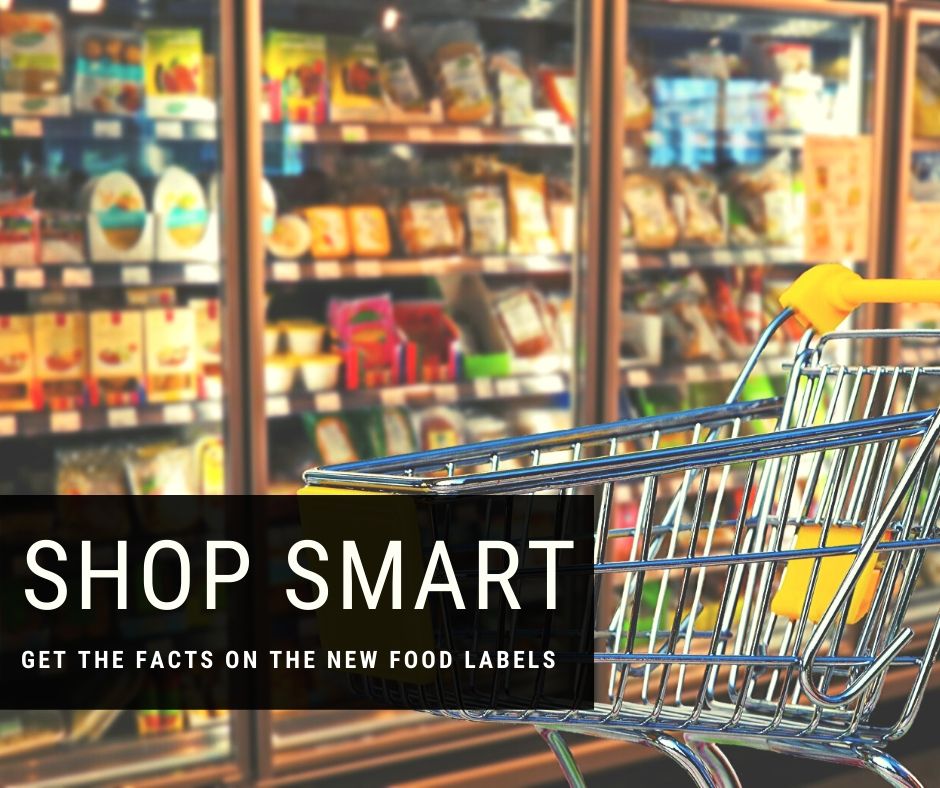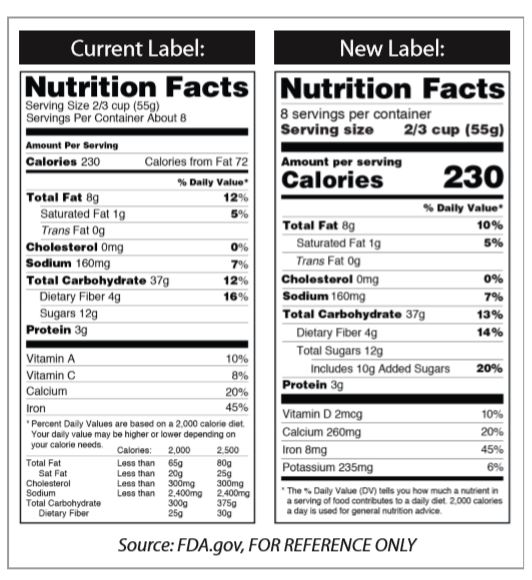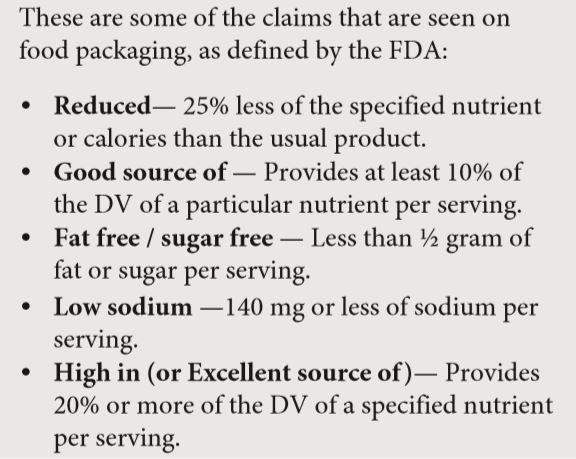
Shop Smart— Get the Facts on the New Food Labels

You may have already noticed some differences in the way the Nutrition Facts panel looks. The new and improved Nutrition Facts label will help you make better decisions about the foods and beverages you eat and drink. Become a smart shopper by reading food labels and start making healthier choices today.
- Find out which foods are good sources of dietary fiber, vitamin D, calcium, iron, and potassium.
- Compare similar foods to find out which one is lower in calories.
- Look for foods that are lower in saturated fat, trans fat, sodium, and added sugars.
Start with the Servings Per Container and Serving Size
Look here for both the number of servings in the package and the serving size (the amount for one serving).
- Serving sizes on the new label reflect the portions most people are eating, not what they should be eating.
- Remember to compare the portion you take to the serving size listed on the label. If the label serving size is one cup, and you eat two cups, you are getting twice the calories, fat and other nutrients listed on the label.
- For packages that contain more than one serving but could reasonably be eaten in one sitting, a second column will be listed to show the nutrition information for the whole package.

Let the Percent Daily Values Be Your Guide
Use percent Daily Values (DV) to help you evaluate how a particular food or beverage fits into your daily eating plan:
- Daily Values are average levels of nutrients for a person eating 2,000 calories a day
- Remember: percent DV are for the entire day—not just for one meal or snack.
- You may need more or less than 2,000 calories per day. For some nutrients you may need more or less than 100% DV.
- 5 percent or less is low — try to aim low in saturated fat, trans fat, sodium and added sugars.
- 20 percent or more is high— try to aim high in vitamins, minerals and dietary fiber.
Limit Saturated Fat, Trans Fat and Sodium
Eating less of these may help reduce your risk for some chronic diseases.
- Limit saturated fats to less than 10% of total calories daily by replacing them with unsaturated fats.
- Limit trans fats to as low as possible.
- Limit sodium to less than 2,300 mg daily (for adults and children 14 years and older). Adults with prehypertension and hypertension may benefit from reducing it further to 1,500 mg per day.
Limit Sources of Added Sugars
Foods and drinks with added sugars often lack nutrients and take the place of more nutritious foods. Examples of added sugars include white granulated and brown sugars, as well as syrups, nectars, honey and other sweeteners.
On the new labels, the amount of added sugars will show grams per serving and a percent DV.*
- Limit added sugars to less than 10% of your total calories per day.
What Claims on Food Labels Really Mean The U.S. Food and Drug Administration (FDA) has strict guidelines on how certain food label terms can be used. FDA also sets standards for health-related claims and nutrient content claims to help consumers identify foods that are rich in nutrients and those that may help to reduce the risk for certain diseases based on the available research. For example, health claims may highlight the link between calcium, vitamin D and osteoporosis or sodium and high blood pressure (hypertension).
*Products sold separately, such as bags of sugar or bottles of honey will only display the percent DV.
Nutrients That May Be Lacking
The new labels put a focus on nutrients many Americans don’t get enough of, including vitamin D, calcium and potassium. Iron is also listed, since young children, adolescent girls, and women who are capable of becoming pregnant may not get enough. These nutrients have replaced vitamins A and C on the new label.
Check the Ingredient List
Foods with more than one ingredient must have an ingredient list on the label. Ingredients are listed in descending order by weight. Those in the largest amounts are listed first. Food manufacturers are also required to state if food products contain any ingredients that are derived from the eight major allergenic foods: milk, eggs, fish, crustacean shellfish, tree nuts, peanuts, wheat and soybeans.
What Claims on Food Labels Really Mean
The U.S. Food and Drug Administration (FDA) has strict guidelines on how certain food label terms can be used. FDA also sets standards for health-related claims and nutrient content claims to help consumers identify foods that are rich in nutrients and those that may help to reduce the risk for certain diseases based on the available research. For example, health claims may highlight the link between calcium, vitamin D and osteoporosis or sodium and high blood pressure (hypertension).

Source:
- The Academy of Nutrition and Dietetics


Most Commented